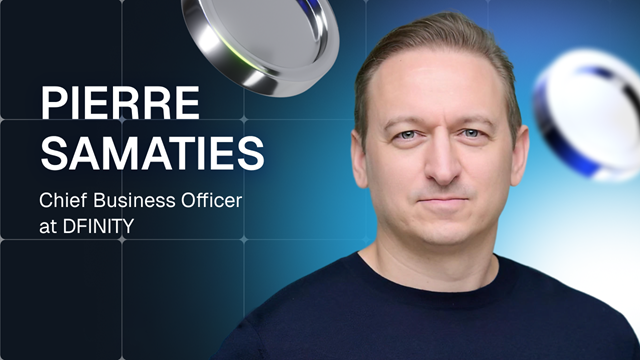DFINITY Unveils “Self-Writing Internet” – The New Era of AI and Web3 at Paris Blockchain Week

At Paris Blockchain Week 2025, Pierre Samaties – Chief Business Officer of DFINITY Foundation – shared his groundbreaking “Self-Writing Internet”, a new step forward combining artificial intelligence (AI) and Web3 technology, allowing users to build blockchain applications with just natural language prompts.
From speech to Web3 applications in minutes
During a lively discussion at the event, Samaties introduced DFINITY’s vision for the Internet Computer Protocol (ICP) – an infinitely scalable decentralized blockchain platform. According to him, “Self-Writing Internet” is a pioneering AI project that allows anyone to build and deploy Web3 applications on-chain with just a prompt, similar to using ChatGPT.
“You type in your idea in natural language, and the AI will not only write the code but also generate a URL with the application deployed directly on the Internet Computer, within a minute or two,” Samaties emphasized. “You can even update the application later with just a prompt.”
Protocol-level integration: The future of multi-chain Web3
One of the key strengths of ICP is its protocol-level integration with major blockchains such as Bitcoin, Ethereum, and soon Solana. This feature allows ICP smart contracts to read and write data directly from major chains without the need for a centralized bridge – which is often considered a security weakness in the DeFi space.
Through its *Chain Key Bitcoin* solution, DFINITY offers deep interoperability with Bitcoin, along with *CkBTC* – a cryptographically secured version of BTC on ICP. This allows for sub-second transaction speeds with ultra-low fees, opening up huge potential for DeFi applications that use real Bitcoin on decentralized infrastructure.
Second Fastest Growing Ecosystem, Deflationary Model, and Superior Scalability
According to Electric Capital, ICP is currently the second fastest growing ecosystem after Solana. This comes from its ability to build a comprehensive “world computer stack” – from the user interface to the data, all stored and processed directly on-chain.
Another notable point is the “reverse gas” model – where users do not have to pay transaction fees, unlike most current blockchains. Instead, developers will pay operating costs, similar to the traditional cloud computing model.
Additionally, ICP uses ICP tokens to pay for computing cycles and this token will be burned after each transaction, creating a deflationary tokenomics model. “We’ve seen a number of days in the last six months where the network is so active that it’s deflationary,” Samaties said.
The goal: Web3 is as seamless as Web2
One of the biggest challenges with Web3 is the complex user experience. With the Internet Computer, applications are accessible directly through the browser without the need for wallets, extensions, or bridges. “Users won’t even realize they’re using Web3. And that’s how Web3 should work,” Samaties said.
Applications on the ICP now number more than 500, including social networking platform OpenChat, a decentralized Telegram clone with more than 20,000 active users.
“A self-written Internet” will drive a new wave of development
While the AI interface for creating applications isn’t officially available yet, DFINITY hopes it will be available to the community soon. Anyone can then become a Web3 creator without any programming knowledge. At the same time, DFINITY also provides funding packages and technical support for potential projects through its in-house development team.
Face-to-face interaction is still key
Concluding the conversation, Samaties emphasized the important role of events like the Paris Blockchain Week in building trust and connections among industry leaders. “While Web3 aims to eliminate traditional trust, trust between people is still the foundation. And nothing builds that better than face-to-face meetings.”
Conclusion:
DFINITY is not only rewriting the way Web3 works, but also opening a new chapter where AI and blockchain combine to turn anyone into an application creator. With the “self-written Internet,” the dream of democratizing technology is taking a big step forward.
